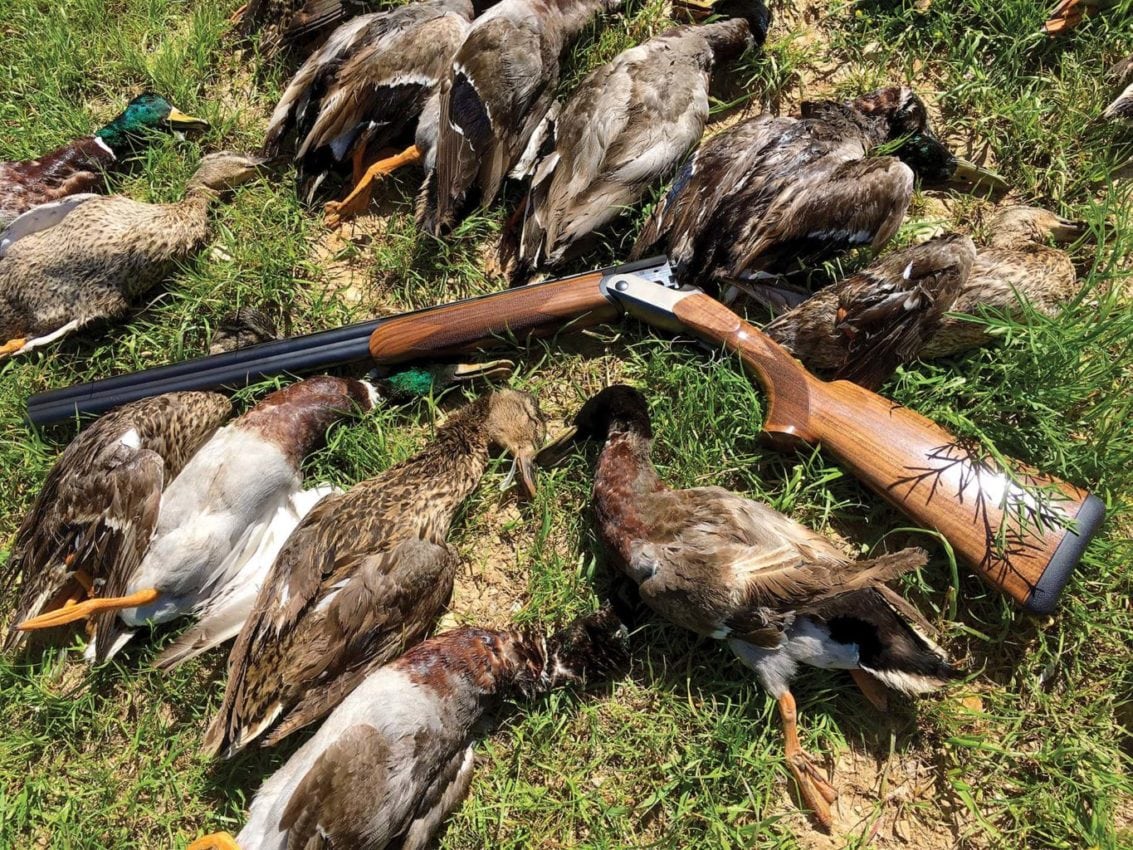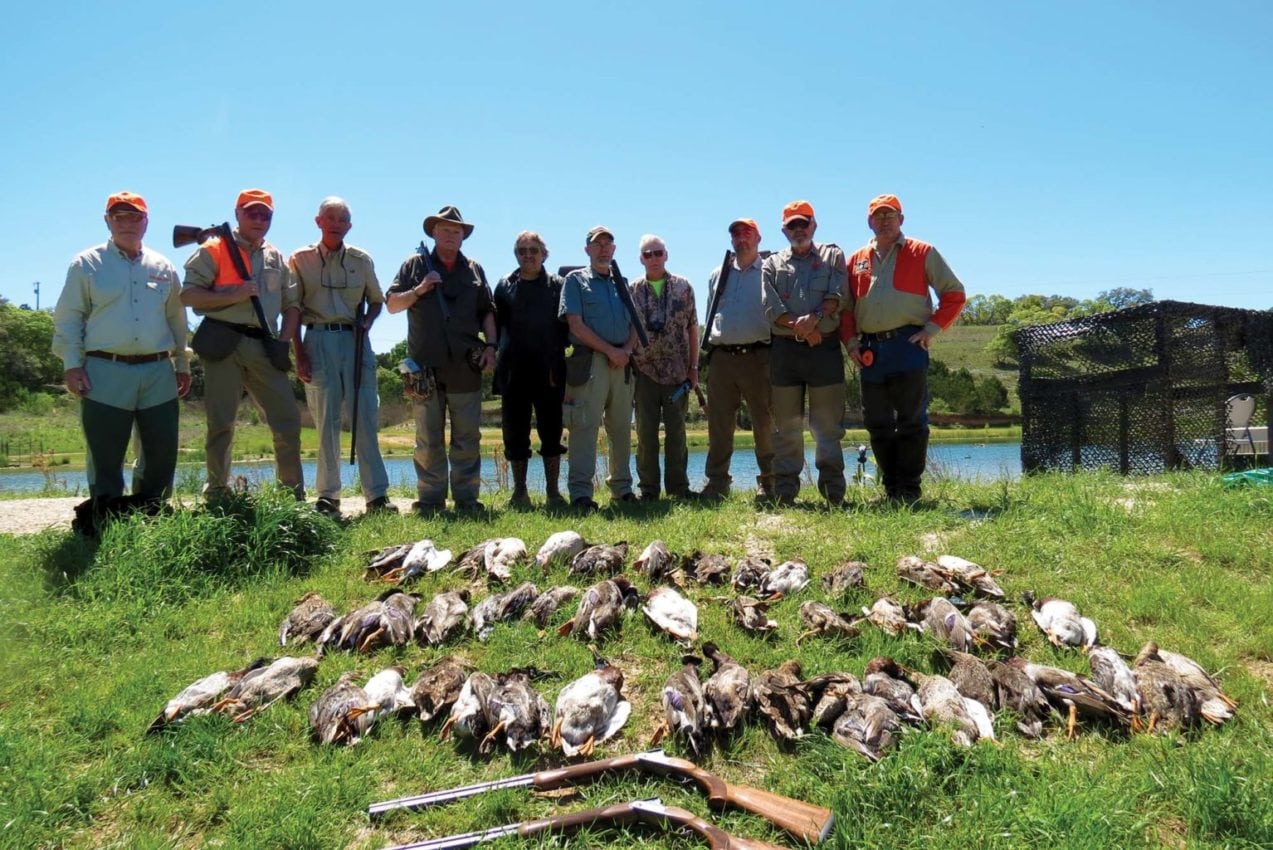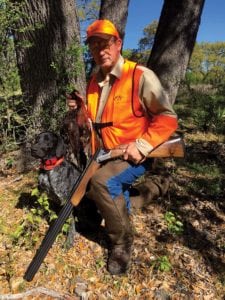Blaser has parlayed its winning reputation with the F3 shotgun into a new line of affordable models that uphold the original’s quality, handling and performance at less than half the price—resulting in the exceptional Blaser technology becoming far more accessible to wing and clays shooters.
 Called the F16, the new Sporting and Game shotguns forsake hallmark features of the F3 such as multi-gauge-barrel interchangeability on a single receiver and the distinctive linear firing pins as cost-saving measures, while retaining innovations of the F3’s advanced action that promote safety, reliability and response.
Called the F16, the new Sporting and Game shotguns forsake hallmark features of the F3 such as multi-gauge-barrel interchangeability on a single receiver and the distinctive linear firing pins as cost-saving measures, while retaining innovations of the F3’s advanced action that promote safety, reliability and response.
Whereas a 12-gauge F3 starts at about $7,900, the F16 Game shotgun lists for $3,795 and the Sporting MSRP is $4,195. Blaser’s F16 ships in 12 gauge only with minimal upgrades such as higher grade walnut, left-handed stocks and weight balancing systems.
Some folks may jump to the conclusion that the Blaser F16 is named after the legendary American F-16 Fighting Falcon fighter jet. And at the F16 U.S. introduction at Joshua Creek Ranch, Blaser distributed T-shirts with a winged F16 logo and ball caps embroidered with “Air Supremacy.” Although shooting the F16 will certainly conjure the jet’s potency and maneuverability, Blaser’s F16 designation is more mundane: the year of introduction.
With its smooth and taut slate-gray receiver that meets the stock at a forward rake, the Blaser F16 appears all-business, as though inspired by the Brioni suit of today’s James Bond. Blaser’s F16 shares the purpose-built disposition of other accomplished over/unders including the F3, Perazzi’s High-Tech and Beretta’s 692 and DT11. If you’re a fan of aristocratic pretension rendered by overwrought ostentatious engraving augmented by wood injected with grain-enhancing ink like so much Botox, look elsewhere because the F16 is pure shotgun Zen. The F16’s leggy silhouette and halo of industrial superiority distinguish its owner as a staunch connoisseur of shotgun competence.
In fact, Blaser CEO Bernard Knöbel was abundantly clear that the quest to design a $4,000 over/under must adhere to the F3 attributes of “pointability, balance, neutral handling and outstanding trigger. And we wanted it to be sexy.”
 The sensuality aspect is naturally personal, but Mr. Knöbel’s design objectives would likely prove indisputable in practice, as we discovered shooting the Blaser F16 Sporting and Game models on a mixed bag of game birds and sporting clays at Joshua Creek Ranch in Boerne, Texas.
The sensuality aspect is naturally personal, but Mr. Knöbel’s design objectives would likely prove indisputable in practice, as we discovered shooting the Blaser F16 Sporting and Game models on a mixed bag of game birds and sporting clays at Joshua Creek Ranch in Boerne, Texas.
Blaser’s fresh start on the drawing board for the F16 yielded a “monocoque chassis,” as Mr. Knöbel called it, similar to the one on the F3. Think of an airplane frame where the aluminum skin provides virtually no structural support in a configuration that’s light and resilient.
Whereas the F3 employs a locking underlug, the F16 has turned to a “bifurcated underlug,” according to Mr. Knöbel, that hooks the monobloc on both ends, supplemented by lumps on the receiver’s interior walls. While contributing to a slightly lower profile, the mechanism is also less expensive to manufacture. Likewise, the F16 has a single cocking rod in the floor of the receiver while the F3 has two.
In turn, the F16 receiver measures 60mm tall, a hair lower than the 61mm of the F3. For handling, the F16 has rounded bottom edges (a semi-round body) that stretch 42mm across, up 2mm from the F3. In effect, the low center of gravity and wide beam communicate seamless balance that enhance swing and control-as easily evident at Joshua Creek Ranch.
 The F16’s receiver proportions are particularly impressive when you consider that it uses taller conventional hammers instead of the F3’s longitudinal firing pins situated like torpedoes in submarine launch tubes. As industrial artistry, the F16 emphasizes Blaser’s reverence for aerospace-grade fabrication versus the smokestack-era, lipstick-on-a-pig value proposition of assembling run-of-the-mill shotguns that twinkle in glossy magazine ads. For Blaser, the F16 characterizes affordability through engineering–truth in manufacturing. That’s why the F16 is so handsomely unpretentious.
The F16’s receiver proportions are particularly impressive when you consider that it uses taller conventional hammers instead of the F3’s longitudinal firing pins situated like torpedoes in submarine launch tubes. As industrial artistry, the F16 emphasizes Blaser’s reverence for aerospace-grade fabrication versus the smokestack-era, lipstick-on-a-pig value proposition of assembling run-of-the-mill shotguns that twinkle in glossy magazine ads. For Blaser, the F16 characterizes affordability through engineering–truth in manufacturing. That’s why the F16 is so handsomely unpretentious.
Blaser’s F16 budget objectives were helped by sourcing technology from the F3. The F16 action features the F3’s Inertial Block System (IBS) that enhances shooter safety and comfort by preventing the ability for the shotgun to fan fire or double.
In addition, the proven Ejection Ball System (EBS) of the F3 cocks the F16’s ejectors only when the shot is fired, eliminating tension after ejecting the hulls. As Blaser explains it, the EBS leads to better durability and consistent ejection force. Blaser’s EBS has another distinct advantage: you don’t have to force their shotguns closed right before a shot to cock the ejectors. In the field, the EBS contributed to a more relaxed and focused shooting experience.
The EBS has a big payoff for owners of new over/unders. How many times have you bought a shotgun and out-of-the-box it’s tough to close? We routinely accept this annoyance as a breaking-in period–that could last for years. Blaser’s EBS eliminates that hassle.
Fans of the F3 will be glad to know that its wonderful mechanical, selectable trigger has been fitted to the F16. At 3.6 pounds of pull, the draw is smooth, precise and intuitive. Upland hunters can forget those crazy five and seven pound pulls. Once you experience the F13 Game trigger the revelation will change your expectations forevermore.
The satin finished barrels feature the F3’s Triplex Bore Design of elongated forcing cones. Steel proofed and chrome lined, the F16 Game barrels are available in 28 or 30 inches while the Sportings’s barrels are 30 or 32 inches. The usual complement of chokes are standard, but come as flush-mounted over the extended Briley Spectrum chokes on the F3. Since the choke threads are identical on the F16 and F3, you can order the Briley option.
The flush chokes on the F16 Game engendered a classic look. At 6.8 pounds, some wingshooters may critique the shotgun a tad heavy. Perhaps, but what we can say is that the pervasive balance of the F16 coupled with that lovely trigger and slender forend will make you wish you owned one. Blaser has set the bar very high and the only production over-under that matched its performance in the field that I’ve ever shot is a standard-grade Perazzi MX20 that starts at around $12,000 compared with $3,795 for the F16 Game.
The F16 Sporting is slightly heavier at seven-and-a-half pounds, attributed to the adjustable weights in the barrel and stock. Unlike the F3 Competition guns, there is no adjustable comb at present on the F16 Sporting. Otherwise, the F16 Sporting and Game are virtually identical except that the F16 logo on the Sporting is red and silver on the Game and each has different color beads.
 At Joshua Creek Ranch, we started our F16 Game evaluations in the field. My hunting companion was Marty Fischer, a former champion clays shooter, co-host of the erstwhile Shotgun Journal wingshooting TV show and now co-producer and host of the TNT Outdoor Explosion series on the Pursuit Channel. Marty is probably the world’s most famous left-handed wingshooter. Marty’s impressive string of downed chukars, quail and pheasants was taken with a right-handed F16. We took a break under the big shade tree, where he related how much he enjoyed the F16 Game and was eager to receive the left-handed version.
At Joshua Creek Ranch, we started our F16 Game evaluations in the field. My hunting companion was Marty Fischer, a former champion clays shooter, co-host of the erstwhile Shotgun Journal wingshooting TV show and now co-producer and host of the TNT Outdoor Explosion series on the Pursuit Channel. Marty is probably the world’s most famous left-handed wingshooter. Marty’s impressive string of downed chukars, quail and pheasants was taken with a right-handed F16. We took a break under the big shade tree, where he related how much he enjoyed the F16 Game and was eager to receive the left-handed version.
In the field, your reaction time to flushed birds is decisive, and I believe the poise of Blaser’s F16 Game can contribute to superior results. The unified integrity of balance, trigger and forend enhanced by the F3 DNA and Blaser’s exacting mechanization led me to realize that the F16 Game is a 21st-century bird gun—a harbinger of what to expect from shotgun manufacturers committed to excellence.
Come 11:30, we drove to the duck blinds on Joshua Creek Ranch for decoyed Mallards. Our guides called and shortly the birds appeared in the clear sky over the hill across the lake. Waiting for their approach meant longer exposure and deliberate mounts that let you savor the F16 Game’s impeccable manners. Compared with the upland hunts, the Mallard experience seemed to occur in slow motion. You could patiently distill singular elements of the F16 Game, luxuriate in its virtues as the shot built and culminated in an effortless hit.
We returned to the lodge’s patio for a relaxed lunch of savory Mexican food, until we got the signal it was sporting clays time. We took up an F16 Sporting. Each three-man squad included a Blaser Pro. We were led by Brenton Irons, a multi-titled clays champ from Australia, anointed Blaser’s first F16 Sporting competitor. We rode the carts up the steep incline to the scenic course resplendent with Hill Country vistas.
 The F16 Sporting I shared with Mr. Irons wore 32-inch barrels choked improved cylinder and modified. Essentially, the F16 Sporting performed like an F3 lite—the disparity being the F16 Sporting came across as more impulsive and faster, as accounted for by the approximate half-pound difference between both. After several stations, you recognize that the F16 can hit targets much faster than your hard-wired tempo. The take-up is quick, response sharp, sight picture excellent. Just surrender to the shotgun—let it lead the timing and twist up your confidence.
The F16 Sporting I shared with Mr. Irons wore 32-inch barrels choked improved cylinder and modified. Essentially, the F16 Sporting performed like an F3 lite—the disparity being the F16 Sporting came across as more impulsive and faster, as accounted for by the approximate half-pound difference between both. After several stations, you recognize that the F16 can hit targets much faster than your hard-wired tempo. The take-up is quick, response sharp, sight picture excellent. Just surrender to the shotgun—let it lead the timing and twist up your confidence.
Mr. Iron’s running commentary on the F16 Sporting ran high. With his personal F3 weighted to nine pounds, he would add only barrel ballast on the F16 to satisfy his control requirements. Overall, he rated the F16 Sporting a double thumbs-up and was eager to take it on the circuit.
By the end of April, F16 Game shotguns should arrive at authorized Blaser dealers with the F16 Sporting slated for the last week of May. Ask for a demo. Decide for yourself. I think I know how this will end for you.
In the meantime, watch this incredible Blaser HD video of the F16 shattering clays at the Dornsberg Shooting Grounds:



